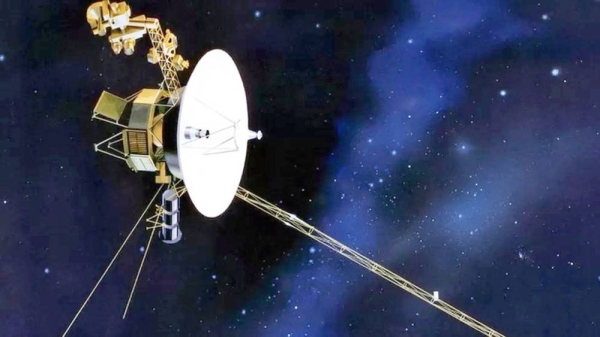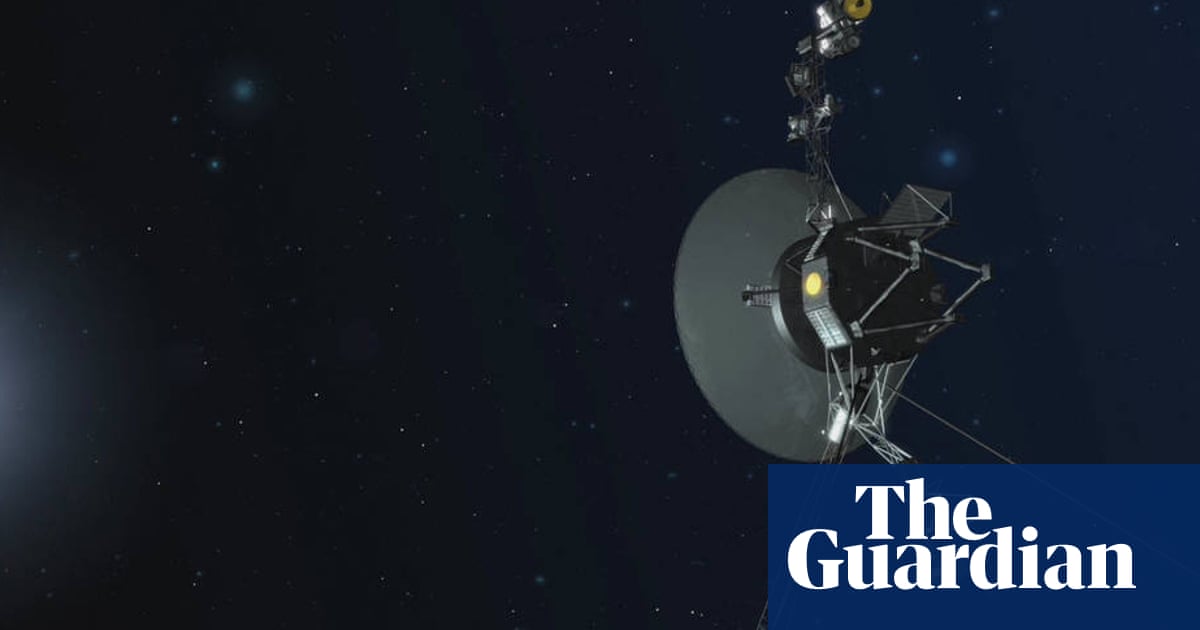
Efforts to re-establish contact with Nasa’s Voyager 2 probe have received a boost after the space agency detected a “heartbeat” signal from the far-flung probe.
Mission controllers stopped hearing from Voyager 2 more than a week ago after sending a faulty command that tilted its antenna to point two degrees away from Earth. The small change in orientation was enough to cut all contact with the probe.
The signal from Voyager 2, which is now more than 12bn miles from Earth, was detected during a routine scan of the sky, Nasa said, and confirms that the spacecraft is still broadcasting and in “good health”.
Voyager 2 is one of a pair of spacecraft that launched in 1977 to capture images of Jupiter and Saturn, but continued on a journey into interstellar space to become the farthest human-made objects from Earth.
“We enlisted the help of the [Deep Space Network] and Radio Science groups to help to see if we could hear a signal from Voyager 2,” said Suzanne Dodd, Voyager’s project manager on Tuesday. “This was successful in that we see the ‘heartbeat’ signal from the spacecraft. So, we know the spacecraft is alive and operating. This buoyed our spirits.”
The twin probes were launched within a couple of weeks of one another to explore the planets and moons of the outer solar system. Voyager 1 is still in contact with Earth and nearly 15bn miles away. In 2012, it became the first probe to enter interstellar space and is now the most distant spacecraft ever built.
Voyager 2 hurtled into interstellar space in 2018 after discovering a new moon around Jupiter, 10 moons around Uranus and five around Neptune. It remains the only spacecraft to study all four of the solar system’s giant planets at close range.
While the heartbeat signal has reassured Nasa that the probe is still working, it is not yet responding to new commands. The next hope of making contact with the spacecraft will come this week when the Canberra dish, part of Nasa’s deep space network, beams the correct command in the direction of Voyager 2 in the hope of reaching the probe’s antenna, according to the space agency’s Jet Propulsion Laboratory in Pasadena, California.
The spacecraft is so far away that even at the speed of light, software commands sent from Earth take 18 hours to reach the probe.
Nasa concedes that the attempt to make contact through the huge dish antenna in Canberra is a long shot. If that effort comes to nothing, as engineers expect, mission controllers will have to wait until October, when the spacecraft should reset automatically and restore communications.
The Voyager probes have faced numerous glitches in more than 40 years in space. Voyager 1 was still on the way to Jupiter when it wrongly switched to a backup radio receiver, only to have the primary receiver burn out when engineers switched it back. After its fly-by of Saturn, Voyager 2’s camera platform got stuck because of a lack of lubricant. Much later, in 2010, the probe suffered a glitch that temporarily affected its science data.
Keeping the probes flying became an art as much as a science after many engineers moved on to other Nasa missions, leaving a dwindling number of ageing staff familiar with the probe and its software. Though state-of-the art in the 1970s, the Voyager spacecraft have only four kilobytes of storage onboard and computing power thousands of times slower than a modern smartphone.
The spacecraft entered interstellar space after leaving what astronomers call the heliosphere – a protective bubble of particles and magnetic fields that are created by the sun. But neither Voyager probe has yet left the solar system. The edge of the solar system is beyond the Oort cloud where smaller cosmic bodies are still under the influence of the sun’s gravitational pull. Nasa estimates that it could take 300 years for Voyager 2 to reach the Oort cloud and perhaps 30,000 years to cross it.












